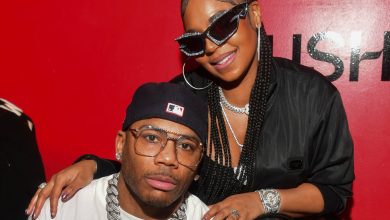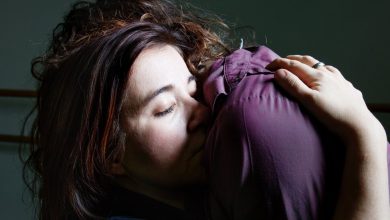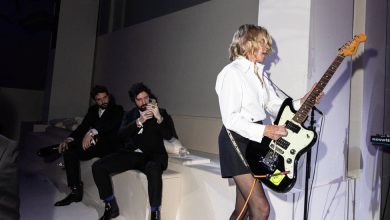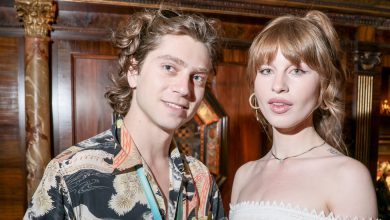What Comes Next for an Artist Whose Work Goes Viral?

IN MARCH 2020, when Covid-19 was ripping through New York and the city locked down, Meriem Bennani felt an impulse to make a video. An animator and artist whose work sits at the intersection of homemade YouTube reality shows, hand-drawn cartoons and documentary film, Bennani was used to staying inside, funneling the world through her computer. But the first week of quarantine made her restless, and she wanted to create something immediate and raw that captured the way she was feeling.
She and the filmmaker Orian Barki, who were spending lockdown together between their Brooklyn apartments, conceived a series of short Instagram videos about the changes they were witnessing. Barki would jot down her observations and feelings each day — how moved she was by the viral videos of Italians playing music on their balconies, or how disturbing it was to see medical gloves splayed on the pavement — and then she and Bennani would use these details to script a short story about what they were experiencing. They roamed their neighborhoods, filming street scenes with their iPhones. Bennani, who often creates animal narrators for her videos, found a file of 3-D animal models she had bought for a different project, and she and Barki chose two lizards with glossy copper-and-green skin and weirdly soulful black eyes for their avatars. Eventually, there would be a supporting cast voiced by various friends: a hummingbird, a cat, a cheetah, a mouse and a raccoon.
In the 86-second video they posted to Bennani’s Instagram on March 17, the two lizards are on a Brooklyn rooftop, staring out at the cityscape. Bennani’s lizard confesses that she likes being stuck at home — no social obligations, time to read and listen to music. Bennani is Moroccan and grew up speaking French and Moroccan Arabic, and her voice is girlish and urbane, with a gentle French accent. Barki’s lizard, who is sensuously low-voiced, with an Israeli accent, teases her friend: “That’s such a quarantine Week 1 thing to say.” The spare dialogue quickly establishes the characters as worldly New Yorkers-from-elsewhere who regard their adopted city with side-eyed affection. The city seems to glitter under their gaze.

A still from Bennani’s two-channel video installation “Gradual Kingdom” (2015-16), about contemporary Morocco.Credit…Courtesy of the artist
When a friend texted the video to me, I thought it perfectly captured the mood of aimlessness and confusion, punctured by occasional magic, that defined New York in those early days of the pandemic. There’s a moment, as the lizards look out over their city, when a camel on a neighboring rooftop spontaneously erupts on his trumpet into the jazz standard “It Never Entered My Mind.” A sheep on another rooftop joins in on bass, while a dog on the pavement down below plays keyboard. Bennani and Barki captured the sense that isolation didn’t suit city people — that their pent-up energy and longing were spilling into the streets.
Bennani and Barki made seven more two- to five-minute videos over the course of the next four months — eventually titling the series “2 Lizards” — that chart the course of the pandemic like the stages of grief. The surprising pleasures of the first weeks morph into anxiety verging on paranoia, which settles into languor as life indoors becomes repetitive and dreamlike, and eventually, after more than 100,000 people have died in the U.S. and the country has erupted into protests after the murder of George Floyd, heats up into anger.
The lizards walk through an empty Times Square one day (a shot of a paper coffee cup with a lipstick mark, on which an animated butterfly is perched, is a metonym for the sudden cessation of street life and the return of nature) and comment wryly on the absurd decadence of the billboards blaring at a crowd of two. They lounge on a bed and watch vaguely sexy YouTube videos, Zoom birthday gatherings and newscasts of a pleading Dr. Fauci (depicted as a friendly snake). Barki’s character visits a cheetah friend on her stoop, tentatively placing an offering of a bag of grapes between them, and then they wait, tense, as a family of unmasked rabbits walks by. There are flashbacks to scenes of nights out with friends, a small gesture like the causal dipping of a finger into a shared dish of soy sauce becoming retroactively tinged with a terrible nostalgia. Eventually, the lizards go out and protest. The videos garnered a loyal following — the first one has nearly 200,000 views on Instagram — and were eventually acquired by the Museum of Modern Art and the Whitney Museum of American Art.
When we meet, one windy day in September, Bennani tells me that she uses animated animals in her work as a way of smuggling complicated messages in innocuous-seeming vessels. “There’s a magic to it that I can’t escape,” she says. Bennani has curly black hair and an affable, definite manner. She is dressed in jeans and a jean jacket and sturdy black boots, and seems, like her lizard, to be someone who enjoys roaming the city. We are walking by the river in Battery Park City, and Bennani points out a sculpture by Louise Bourgeois that looks like a pair of giant metal breasts lounging on the grass, baring themselves to New Jersey across the river.
Animation is one of her primary tools because it’s a zone of total fantasy: “It stretches, it bounces, so everything is this pure storytelling material,” she explains. “That’s what everyone and everything is made of. That’s the guiding principle. And storytelling is my guiding principle.” She attributes the success of “2 Lizards,” in part, to its modesty. “I think that we weren’t trying to find the truth, or reflecting in this superconstructed way. We were really like, ‘This is what we’re feeling, what it feels like right now.’” (Or as Barki puts it when I speak to her over the phone, “We did it out of love.”) “There is an aspect of the lizards, to me, that it’s not even good in an art context way,” Bennani tells me. “There’s a sweetness to it. Everyone was feeling soft. And now it takes me back to that vulnerability.”
Though Bennani and Barki released the “2 Lizards” project in a more populist way than is usual for a work of contemporary art — on social media, at a time when most museums in the world were closed because of pandemic restrictions — it has much in common with the longer video works that Bennani has become known for and has shown in sculptural installations at institutions like the Whitney and MoMA PS1: an inquisitive, antic humor that can encompass gimlet-eyed political observations; an insistent interest in showing the world through the eyes of those who are usually decentered (queer people, Arab people, women); an uncanny ability to locate the sublime in the raw footage of the internet. She is engaged in an ongoing project of world building, while managing to distill the visual complexities of our culture.
Bennani’s work combines the frenetic surrealism of a Ryan Trecartin video, the argot of memes, Hollywood special effects and hand-held smartphone cinematography. Even as she poses a complicated question — how do we locate reality in an increasingly surreal and dystopian world? — she’s just doing what comes naturally to her, guided by pleasure and joy. As a child, “I got to spend a lot of time in my room doing my thing,” Bennani says. “I feel like my life hasn’t changed since childhood.”
BENNANI, WHO IS 33, was born in the coastal city of Rabat, Morocco’s capital, the middle of three sisters. The family was close, but she always relished time alone drawing, messing around on the computer and entering into fantasy worlds. Her father, an architect, and mother, a pharmacist who often appears in Bennani’s videos playing a version of herself, were encouraging. She grew up “obsessed with the Cartoon Network,” and watched it well beyond the point when her friends lost interest. Bennani attended an elite French school, a legacy of Morocco’s colonial past, which she describes as a factory “of good colonized people who will perpetuate soft power.” She studied French instead of Moroccan history, and internalized a conviction that the French language was superior to Arabic. “You start to have a very unhealthy relationship to your own culture and feel like you don’t recognize yourself,” she says. “I’ve done so much work to try to emancipate myself from that.”
After high school, she studied art at the École Nationale Supérieure des Arts Décoratifs in Paris and Cooper Union in New York and, in 2019, returned to her old French school to make a documentary, “Mission Teens,” about the way that a postcolonial education shapes, and often warps, some Moroccan students. Bennani, as interviewer, casts herself in the role of a miniature donkey holding a camera, and we occasionally glimpse her as she observes the teenagers studying the history of colonialism in class, or a group of cool girls gossiping and dancing suggestively. One boy she interviews delivers a jingoistic monologue about “real Moroccans,” as he shows her his closet full of designer clothing and orders the Indonesian women who work in his house to bring him lunch. As he comments unselfconsciously on what he considers to be the distasteful habits of the underclass, we see Bennani’s donkey avatar reflected in his sunglasses, allowing us to see her seeing him, to judge as we might. But Bennani isn’t interested in condemnation or fun at his expense. Instead, she’s more attuned to the jumble of forces — historical, familial, cultural — that form an identity, and the bleak hilarity that can ensue as a result.
Her videos are filled with special effects, which are emphatically lo-fi: “I’m really interested in bringing special effects in footage that is not shot really high production because, to me, it’s the same trick as some horror movies that look like you could have shot them on an iPhone. When the horror happens, it looks so real that it’s actually terrifying,” she says. She’s trying to achieve the same emotional immediacy, with little jolts of fantasy that make the real world feel heightened and destabilized.
In her videos, there are animated gadgets (toasters, security cameras) that dance and sing, animal narrators and fictionalized dream world scenarios, all of which share a deliberate, unpolished aesthetic that recalls early aughts clip art. In this way, she exists in a lineage of low-budget, high-concept narrative video artists that includes Lynn Hershman Leeson, Joan Jonas and Pipilotti Rist. And yet the populism inherent in her work separates her from many of her forebears. Even though it’s full of surreal animations, Bennani has increasingly come to categorize her work as a type of documentary. She likes to put real people — relatives, friends and larger-than-life characters she finds on YouTube and Instagram — in fictional scenarios. “It kind of makes them more emotionally accessible than a very straight-up dry documentary approach that presents itself as sincere, as not artificial, but actually is a complete construct,” she says.
As “Mission Teens” unfolds, Bennani uses animation to soften, complicate and amuse. At one point in the film, as she drives too fast in a car down a boulevard with a few of the teenagers, her camera pans the streetscape, and the gaudy houses of Rabat’s elite begin to sing of their complex inner lives: “I was bought by an ambassador / Got me up a golden door / Still I feel alone / Still I feel alone.” The melody was written by a Moroccan singer and influencer called Lil Patty, whom Bennani encountered on Instagram. The work is at once absurd and touching: tweaking the preening self-satisfaction of the ultrawealthy, while at the same time painting the city with the giddy, dramatic affect of the teenagers she is studying. When Bennani showed the video at the 2019 Whitney Biennial, she was pleased to hear that one of the museum guards was constantly singing the mansions’ song. He couldn’t get it out of his head.
ON A GIVEN day, Bennani might spend hours on YouTube. Her curated list of music videos from around the world that lives on her website is an education in global pleasure-seeking, bodily variety and sheer weirdness, with examples of everything from Iraqi heavy metal to Congolese rumba. She watches everything: wrestling troupes, highly produced reality shows, home video footage and viral memes, much of it from North Africa. “It’s the best way to stay in touch with what’s happening in Morocco because I feel like even if I watch Moroccan TV, I wouldn’t get that,” says Bennani, who moved to New York in 2009. “This is pure reality. It’s made by the people who are in it, and so I’m learning so much about what people care about, what they listen to; what are the subjects, the modes of expression?” Often, something odd catches her eye — something that would perhaps be beneath notice for anyone else but that instantly strikes her as precious. Recently, a video of two kids riding on a motorbike mesmerized her: There was something about the way they looked, like adult impersonators, that amused her and gave her ideas about all the ways bodies can be shape-shifting and unpredictable.
What she’s looking for in this thicket of references is a new language, something to challenge the conventional rhythms of filmmaking — quick cuts, a certain slickness — that she absorbed from school and American TV. “There is such a language to how you make a reality TV show,” Bennani says, “so if I’m inspired by that, I’m bringing in a language that is a product of a culture that is not the one of the people I’m filming. But when I watch Moroccan YouTube, I see what a true reality TV show would be, and what the pace would be if it were edited from a Moroccan way of structuring your thoughts.” She gives me an example of the different pacing possibilities she’s learned. “There are these videos that people make, and before making them there’s always a five-minute intro of greetings. You would never have that in America. They’re not patient,” she says. “But here, they all start with five minutes of just being polite.”
Since 2016, Bennani has been engaged in what she calls a speculative documentary — a series of videos about a fictitious island in the middle of the Atlantic Ocean she calls the Caps. The idea began to suggest itself when the Trump administration was cracking down on migrants. Bennani was on a research jag, obsessively learning about teleportation. (Despite her playfulness, she’s unfailingly rigorous, and spends several minutes explaining recent experiments with photons in the Canary Islands and elsewhere that prove teleportation is possible.) She started to imagine a future in which teleportation has replaced air travel, and becomes the primary means by which people migrate. “Americans would freak out,” she says.
So she conceived of an updated version of Immigration and Customs Enforcement that had the technology to intercept teleportations, and transport people to a holding place on the Caps. The disrupted teleportations result in physiological glitches, including pixelated bodies and a ghoulishly hilarious deformation Bennani calls “plastic face syndrome,” whereby skin is covered in a layer of plastic. (“In the Caps, bodies are a completely different story,” she explains. That they are constantly changing and in transition is “an extension of queerness.”) The story of this universe is narrated in the first video in the “Life on the Caps” series, “Party on the Caps” (2018-19), by a buoyant crocodile who gives a guided tour of the animated megalopolis. The crocodile is voiced by Crotchet Fiona, a rapper from Barcelona whom Barki met on Instagram and who is originally from Equatorial Guinea and has a chipper, Spanish-inflected accent. “It’s hard to place,” Bennani says, which is why she likes it.
The Caps, even though it’s filled with the injured bodies of people whose lives have been violently arrested, is a lively, teeming place. People are stuck there for generations, so they start to build things: neighborhoods, cities, their own internet, their own brands. Bennani has filmed each of the three installments of “Life on the Caps” in Morocco, including one this year that used footage shot by her subjects, and the second chapter, which will be exhibited at the Renaissance Society in Chicago in February, 2022, and Nottingham Contemporary in England in May. The project has become a device, she says, through which she can talk about the country of her birth, to examine the state of being in diaspora, of statelessness. It’s a condition too easily regarded as tragic, or anomalous. But for Bennani, it’s not necessarily either. When you’re in limbo, she suggests, you don’t necessarily want to return or to assimilate. Maybe the Caps, Bennani says, “is a blueprint for a way of living.”
It would be too simplistic to call Bennani a utopian artist: Perhaps it’s more accurate to say that she is a believer in the idea that the world, though fallen, still has a lot of what we need in it. It’s this conviction that makes her such a skilled chronicler of this uncertain and destructive pandemic moment. Watching “2 Lizards” a year and a half after it debuted, I’m struck by how much it has to tell us, and how pithily and lightly it does so. It feels definitive — perhaps the canonical artwork about a very bad year. The dialogue is poetically tight and laced with funny social observation that is more authentic and honest about what happened than most news reports — as in the sequence in Episode 7 when a reporter (a mouse) marvels at how resistant city officials were to imposing a curfew in the early months of the virus, and then, soon after the protests started, suddenly declared one. The lizards, with their Gumbyesque bodies, saunter through the real New York City streets: its oily puddles, decrepit overpasses, orange sunsets over clusters of rooftops, blaring bodega signs — avatars not only for Bennani and Barki but for all New Yorkers who were seeing the city anew, in its glory and ugliness, confronting the inequities that bolstered daily life. The work has something devastating to say. But at the same time, it has the appeal of a cartoon.
The lizards address something childish in us, and suggest that there are simple means available to regenerate the world. Bennani herself reiterates this point the last time I talk with her. She is speaking to me from a Parisian cafe on her way to Morocco to shoot the next installment of “Life on the Caps” and talks about how much she loves continuing to map and give detail to this fictional world. It’s “a language being built in real time.” In examining the horrifying aspects of a contemporary global society, she’s managed to create for herself a boundless reality. “It’s an exciting place,” she says, “because it feels like everything is very possible there.”




